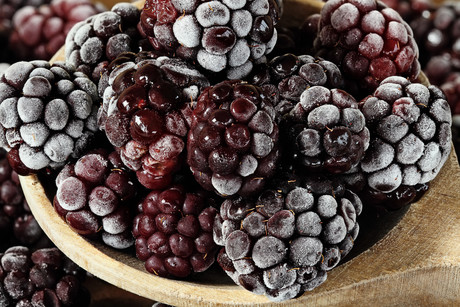How to reduce dehydration in frozen products
Friday, 18 November, 2016

Dehydration happens when more water is being lost rather than absorbed.
As humans, we lose moisture via breathing and through our skin on a regular basis, but this is usually balanced from a consistent water intake. The same process occurs in other organisms that have cell structures with a high water content.
Vegetables and meat start the dehydration process right after being harvested, as water leaves the cells and evaporates into the air. Dehydration happens through both evaporation, when water turns into a gas from a liquid state, and sublimation, when water turns into a gas from a solid state. This phenomenon does not only occur during the freezing process.
In a freezer, dehydration causes shrinkage and damage of the product and an actual weight loss that reforms as snow. The snow that forms takes away weight and quality from the finished frozen product.
The environment inside the IQF freezer plays an important role in reducing dehydration. In an open space water vapours just escape, in a closed freezer, however, snow and ice will start to develop if the air is saturated with moisture. This occurrence is called precipitation.
What are the factors that cause dehydration of the product?
The factors that have an effect on dehydration are the following:
- Infeed temperature
- Temperature of air
- Freezing time
- Saturation
- Relation of surface and volume
- Surface water
- Water content
- Air speed
As the temperature goes down air becomes dryer. This interrelationship between dewpoint and temperature results in more dehydration. As air dewpoint plays an important role in the water loss process, dehydration will happen quicker if the air is dryer.
A smaller product, with larger surface area compared to its volume and weight, will dehydrate more than a larger product. Moisture on the surface of the product, such as water or juice, will have the tendency to evaporate.
A product containing a higher amount of water will dehydrate more than a dryer one and more air movement will speed up the dehydration process.
How can dehydration be reduced in freezers?
Essentially, if precipitation (snow formation) can be avoided then dehydration can be reduced. The key is to keep the air damp so that it will not take on moisture from the product. During the IQF process, low infeed temperature and efficient crust freezing also help in reducing dehydration.
A conventional IQF tunnel freezer will have about 1.5 to 2% of dehydration; this can be measured from snow formation.
In a spiral freezer, product can lose up to 4% of its initial weight through dehydration. Sometimes this can be seen on products as ice crystals formed around them resulting in a less encouraging appearance.
A product that suffers freezer burns will decrease in quality and value. The product has a decreased surface moisture due to the washing process made before freezing; this way the product is protected, though there might still be a slight weight loss.
Snow formation during dehydration requires the same amount of energy to create as it takes a product to freeze, which means that the final product will suffer a loss. To put things in perspective, if a yearly production cost is of €5,000,000, the producer will be saving €50,000 per year if dehydration is decreased by 1%.
Dehydration is influenced by many factors that occur during the freezing process. By understanding these factors, users can choose an optimal freezing technology that will reduce cost and increase productivity and quality.
OctoFrost IQF technology
- The OctoFrost IQF freezer balances the airflow and speed maintaining the right moisture and freezing time — the percentage dehydration is reduced to 0.3 to 0.5%.
- Using the OctoFrost IQF freezer will result in less dehydration as there is less sublimation before the surface of the product is completely frozen.
- The OctoFrost freezer has a levelled airflow with good aerodynamics that reduces turbulence, which results in minimal precipitation. In the IQF freezer, air is kept in a continuous flow because as soon as it stops it will start to precipitate. As air moves through the coil it cools and therefore has a tendency to precipitate. The OctoFrost IQF freezer avoids this issue by accelerating air speed after it exits the coil.
- OctoFrost IQF freezer cannot be directly compared to a cold storage freezer as it could not handle washed products. Both cold storage freezing and spiral freezing are too slow, therefore the ice crystals will be large and the integrity of the cell structure will be affected. This is when the drip loss after defrosting a product shows the importance of freezing quality.
Resource-saving greenfield brewery being built in Germany
Designed with a 500,000 hectolitres/year capacity, a greenfield brewery is being constructed by...
Mars Wrigley Australia invests $6.5m to expand capacity at its Asquith factory
A new production line and circular-by-design packing technology have been introduced at the...
In good spirits: SRD's plans to transform iconic Oak factory site
On 21 March, at the historic former Oak factory site in Muswellbrook, Sydney Rum Distillery (SRD)...














